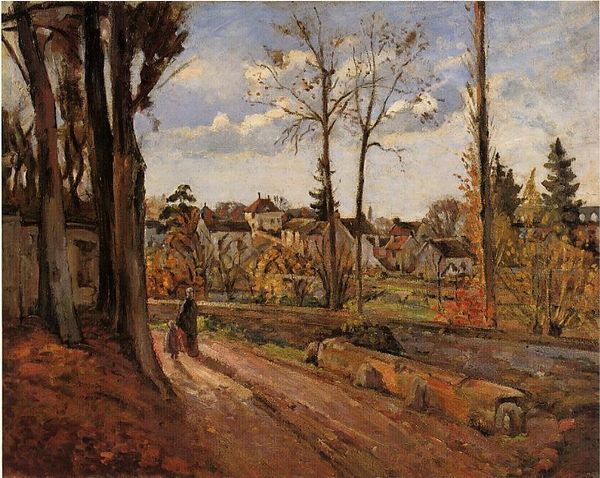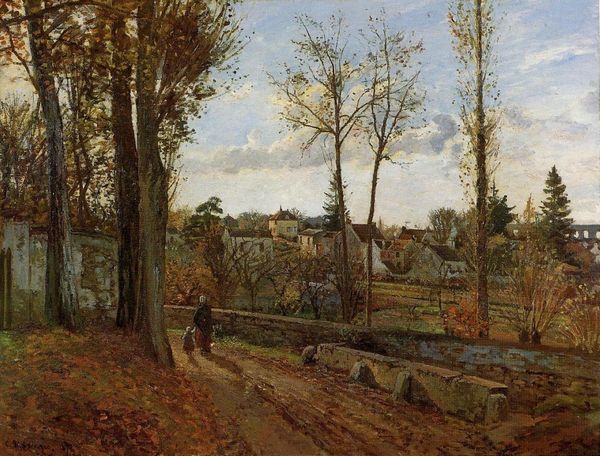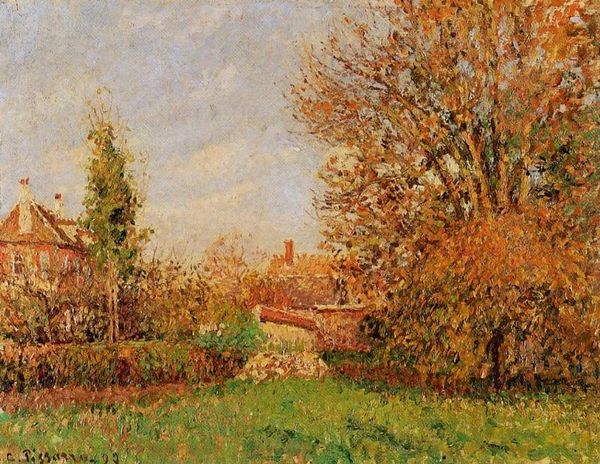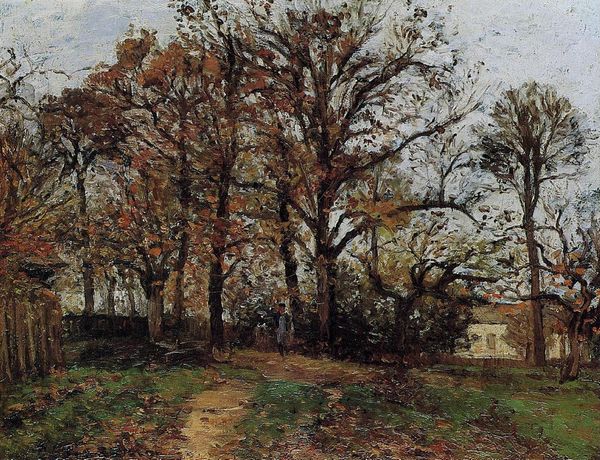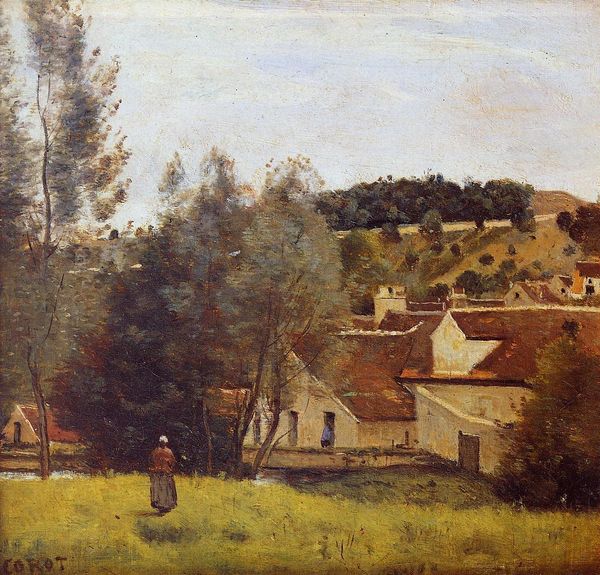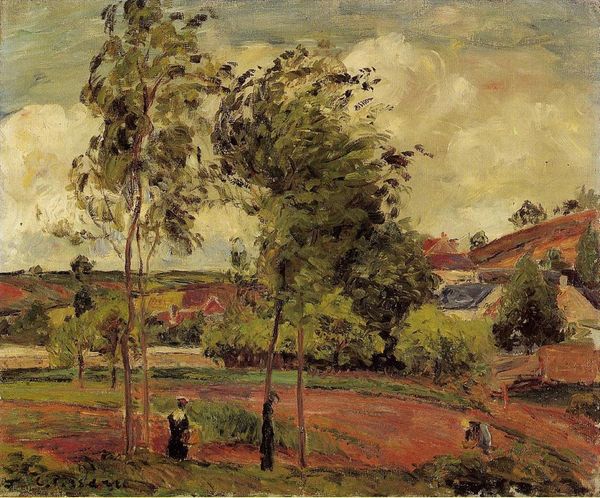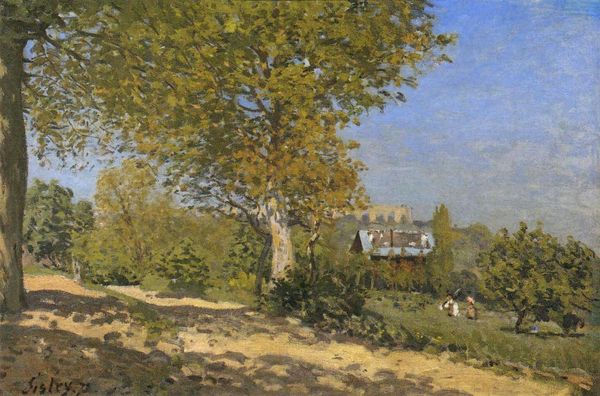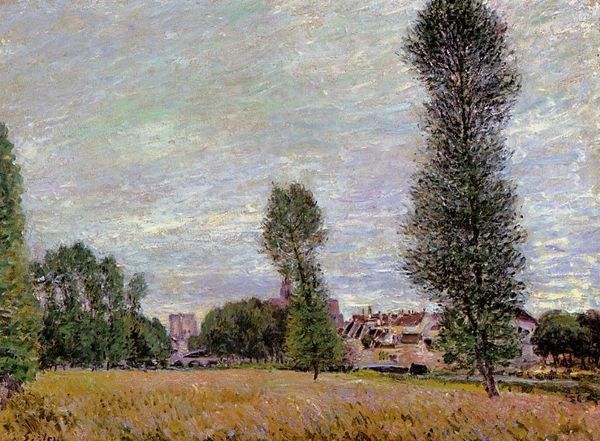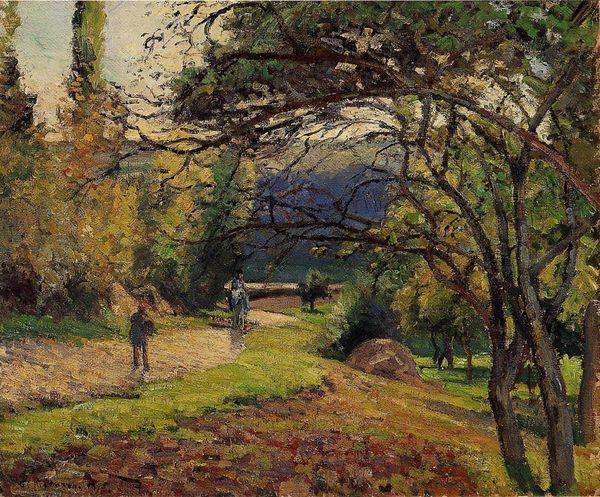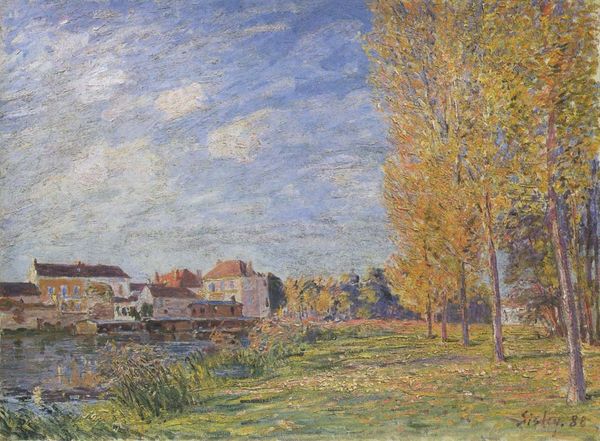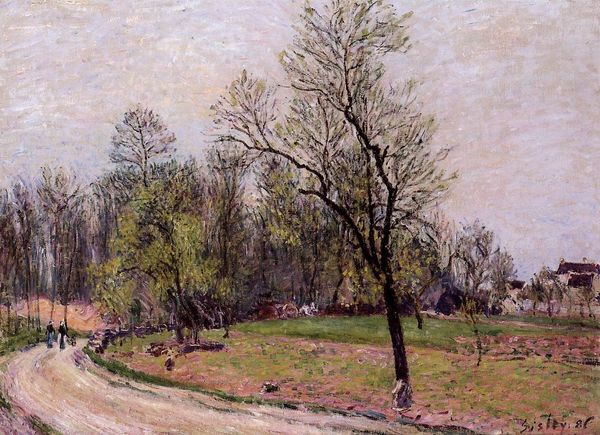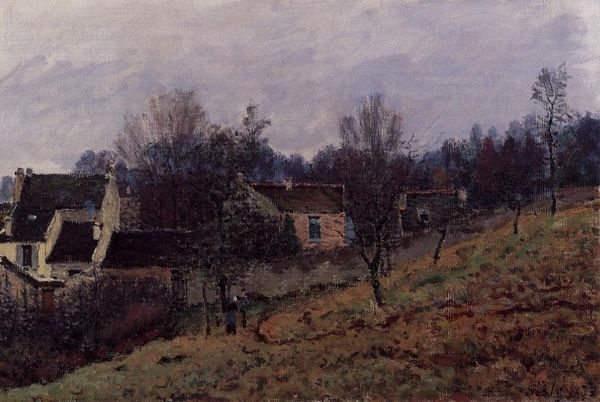
painting, plein-air, oil-paint
#
painting
#
impressionism
#
plein-air
#
oil-paint
#
landscape
#
impressionist landscape
#
geometric
Dimensions: 69 x 78 cm
Copyright: Public domain
Editor: So, here we have Camille Pissarro's "The Pine Trees of Louveciennes," painted in 1870. It’s an oil painting, fairly small, and the first thing I notice is the tension between the somewhat ordered landscape and the wilder, more chaotic feel of the Impressionistic brushstrokes. What strikes you about this work? Curator: I see this work as a powerful statement on the role of landscape in shaping national identity after the Franco-Prussian War. Painted the year that conflict ended, "The Pine Trees" presents a seemingly tranquil scene, yet it's charged with a desire for renewed order and beauty in a France scarred by war. Editor: That’s interesting. I hadn't thought about it in terms of national identity. So, the choice of Louveciennes as a subject, a town outside Paris… that's significant? Curator: Absolutely. Louveciennes, like much of the Parisian outskirts, was affected by the war. Representing it wasn't just about painting a pretty scene; it was about reclaiming a space, reasserting French ownership and rebuilding cultural pride. The Impressionists often focused on the everyday life of the suburbs; places ignored in academic art, elevating ordinary places into something worth depicting. How do you see Pissarro negotiating the boundary between realism and impressionism here? Editor: Well, I can see the realist tradition in how carefully he’s considered the composition, but it's the loose brushwork that really defines it for me as Impressionist. You've definitely given me a new appreciation for how socio-political context influences artists, even in seemingly straightforward landscapes. Curator: Precisely. Consider the Salon system Pissarro opposed; this piece reflects a turn towards more democratic representations. It pushes us to question what, and who, defines 'beauty.' Editor: That gives me a lot to think about. The layers of meaning in this simple landscape are more than I initially expected. Thanks!
Comments
No comments
Be the first to comment and join the conversation on the ultimate creative platform.
